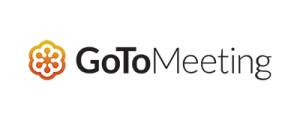
In this post…
Like most everyone else in the world right now, our team has been working remotely for the last several weeks. However, we’re fortunate that we already had methodologies and tools in use that made the transition less abrupt than others have experienced. Our team has always had the option to work remotely, and many of us do so one or two days a week. Since the Stay at Home order came down from Sacramento, we’ve been putting our remote tools to the test, and learning what does and doesn’t work.
We realize that working remotely during these times is not the same as it ever was — and that some days work is more about connecting with coworkers than being productive. So here are the tools that we use, not just to get work done, but also to play, and to help our team celebrate and commiserate the ups and downs until we can be together again in the same office.
Communication: Slack
Slack may be the de facto standard for teams that work in tech, but every company I’ve ever seen use it has configured the channels in a way that is unique to them alone. We’re no exception. Sure, we have the typical productivity channels you can use to get work done, but we also have the extracurricular channels reserved for sharing a good laugh or venting a frustration. It’s these latter channels that have seen the most activity recently and have helped us retain our sanity. If you are not using Slack in a silly way, now is the time to start. Seriously, create a channel for sharing pictures of your pets, or funny jokes, or anything that can considered a healthy distraction.
Humor: Giphy
Why use words to share something that can be so eloquently expressed in a GIF? We’ve integrated Giphy with Slack and it has truly enriched our team’s internal communications. Something as simple as an animated thumbs-up in response to a developer’s question adds a fun personal touch as well as the approval she needs to continue coding. As for the aforementioned extracurricular Slack channels, they just wouldn’t be the same without Giphy, which seems to always have the perfect animation to match the current mood of the channel.
Music: TuneIn
Ever since we founded Pelago twenty years ago, Nic Harcourt has been curating the eclectic, streaming playlists that serve as an aural backdrop in the office. When he transitioned from KCRW to KCSN, we discovered the free Internet radio web site TuneIn as a way to continue listening to his daily mixes. Even though our team is working remotely and apart from one another, we have the option to tune in to the same radio station. It’s a small act of solidarity, but for some it’s helped ease the transition to working remotely.
Meetings: GoToMeeting
We’re longtime customers of GoToMeeting, partly because the parent company is headquartered in the same city as us, but mostly because it’s a great product. We use the video-conferencing and screen-sharing software for internal meetings and one-on-one customer support. Our usage has increased notably as our usual meetings have become virtual, but also because we’ve been helping more new customers transition to working remotely with our workflow management software, Intervals. Additionally, we’ve been using GoToMeeting for virtual get-togethers, a time where we can talk about anything but work.
Phone: Grasshopper
Administering a phone system, even a VOIP one, is an exercise in pain and futility. We’ve had several different phone systems over the years and now that we use Grasshopper we’re relieved to have those days behind us. Using a SaaS product for our phone system means we have no hardware to install or wires to run. And because our phones travel with us, we’re completely untethered from the office. Using a service like Grasshopper is a no-brainer for teams who need a centralized phone system while working remotely.
Documents: Google Drive
Our team relies heavily on shared documentation, especially when we’re working remotely and consensus matters. Google Drive provides us with a platform where we can collaboratively create documents and edit them in real-time. Because, ideas are difficult to communicate in meetings unless you have a way to sketch them out or write them down. Once we’ve created the document — whether it’s a drawing, spreadsheet, doc, or slide — we link it to the relevant task in our workflow management software, Intervals, so it can be referenced quickly and easily when we do the work.
Collaboration and Workflow Management: Intervals
As much as we are allowing ourselves permission to put life first, we are still motivated to work. Our preferred platform for collaborating as a team and managing our work remotely is Intervals. Obviously, we’re biased because we built it and we offer it as a paid subscription service. But, like our customers, we also use Intervals in our day-to-day work. We use it to set weekly goals, review daily priorities, and plan our schedules. We also use Intervals to track our time, manage our tasks, and analyze our ongoing efforts using dashboards and reports. If your remote team needs a central location to track and manage their work, Intervals might be the right fit for you.





For Slack, Slacker is good times https://slacker.nathanhoad.net
For QA and working with remote teams Camtasia (https://www.techsmith.com/video-editor.html) has been invaluable for communicating bugs. When working asynchronously with a team it is really helpful to be able to record a quick video and talk through the bug instead of a bunch of screenshots and steps. There is a learning curve but they have tons of help docs to get you going.